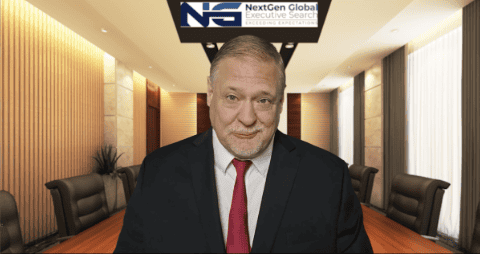CXO Transitions: The Confidential Way Leaders Find What’s Next
CXO career transitions have always carried weight—but in today’s unpredictable economic climate, the stakes have never been higher. CEOs, CFOs, COOs, CHROs, and other enterprise-level leaders face increasing pressure not only to steer their organizations through volatility but to manage their own careers with greater discretion than ever before. At the same time, boards are more vigilant, more strategic, and more involved in succession planning—often years before a leadership change becomes public.
These parallel forces have made confidentiality the backbone of modern executive search.
Whether a CEO is considering their next chapter, a board is quietly exploring external candidates, or a senior leader is benchmarking new opportunities before a planned exit, discreet recruiting has become the only acceptable path for top-tier talent. Premature disclosure can create uncertainty among employees, trigger investor concern, and destabilize internal operations. For executives, it can damage credibility, sour board relationships, or undermine leadership authority.
The High-Stakes Nature of CXO Transitions
Leadership transitions at the CXO level are fundamentally different from career moves at any other stage. A manager who leaves triggers tactical disruption. A chief executive who leaves can shift corporate strategy, market confidence, competitive positioning, and valuation—sometimes overnight.
This is why confidentiality isn’t just desirable; it’s essential.
Why executive transitions carry massive organizational implications
When a CEO or top enterprise leader considers a transition, multiple stakeholder groups are affected:
- Employees may worry about restructuring or instability.
- Investors may question the long-term direction of the company.
- Customers and partners may hesitate to commit to future plans.
- Competitors may exploit the vacuum to win market position.
This makes leadership changes uniquely sensitive events—especially for high-visibility roles.
The cost of premature exposure
A leak that an executive is considering a move—or that a board is quietly preparing for succession—can result in:
- stock price fluctuations
- internal power shifts
- media speculation
- employee attrition
- political tension within the C-suite
In some cases, it even accelerates a transition before the company is ready.
Boards understand this risk well. For this reason, many have adopted a more disciplined and discreet approach to executive search and succession planning—reducing exposure while increasing strategic control.
Where succession meets executive search
Confidentiality plays a crucial role in aligning internal succession plans with external recruiting. Boards increasingly run parallel evaluations—assessing internal candidates quietly while also discreetly benchmarking the external market. This dual-track approach ensures that when the time comes, the board can make a fully informed decision without signaling instability to the organization.
Why Confidential Searches Are Now the Norm for Top Leaders
Over the last decade, confidential recruiting has shifted from being a niche practice to the standard approach for high-level executive search. Several factors have driven this rise:
1. Evolving expectations for CEO and CXO career management
Senior leaders now proactively manage their career horizons rather than waiting for a board decision. This includes:
- exploring new opportunities privately
- assessing market value through discreet conversations
- planning transitions aligned with personal timing, tenure, and goals
As CXOs become more intentional about their next steps, confidentiality becomes the mechanism that allows exploration without risk.
2. Heightened board governance and succession pressure
Boards today are expected to have:
- a documented succession plan
- clearly defined leadership risk controls
- contingency strategies for emergency transitions
- independent assessment of external leadership talent
Confidential searches help boards meet these governance standards while keeping business impact to a minimum.
3. The difference between public recruiting and confidential executive search
Public recruiting—such as posting roles or conducting open search campaigns—works for mid-level or functional talent.
It never works for C-suite transitions.
Confidential executive search avoids:
- public job postings
- open-source candidate pipelines
- media detection
- internal speculation
Instead, it leverages trusted networks, discreet outreach, and controlled shortlists that protect both executives and organizations.
What CXOs Really Look for During Confidential Transitions
While compensation and title remain important, CXOs evaluating their next move tend to prioritize deeper, more strategic factors. Confidential transitions give them the freedom to explore whether a new opportunity truly aligns with their future vision.
Alignment with Board Expectations and Strategic Direction
Senior executives don’t simply look for a role—they look for a leadership environment in which they can succeed. They seek alignment in:
- strategic long-term goals
- board composition and governance style
- decision-making cadence
- tolerance for innovation or transformation
- clarity in role expectations
A mismatch here is often a dealbreaker.
Cultural Fit and Enterprise Maturity
Executives want to join organizations where:
- corporate values align with their leadership style
- the culture supports growth
- the team is capable and collaborative
- the organization’s maturity matches the leader’s experience
This is especially important when moving from corporate to private equity environments, or from founder-led companies to more structured enterprises.
Succession Pathways and Leadership Autonomy
Many CXOs—especially first-time CEOs—look for opportunities where they can shape the organization without unnecessary constraints. They evaluate:
- degree of autonomy
- board oversight levels
- speed of decision-making
- succession expectations for their own future
Executives who have already served in one C-suite capacity often aim for their “next chapter” role, making these considerations crucial.
Timing, Tenure, and Personal Goals
Confidential transitions allow executives to assess:
- whether the timing is right
- how the move fits their long-term career roadmap
- family considerations
- geographic preferences
- readiness for a new leadership cycle
In many cases, executives quietly explore the market for years before committing to a move.
Behind the Scenes: How Confidential Executive Search Works
Most people will never see how senior executive recruiting happens. There are no job boards, no public pipelines, and no formal application processes.
Instead, confidential executive search relies on precision, control, and trust.
Anonymous Outreach and Early Conversations
Search partners use coded language, anonymized descriptions, and selective targeting to reach only the top, most relevant leadership talent. This ensures:
- no digital footprint
- no LinkedIn activity signals
- no traceable communication
Executives often engage initially without knowing the client name, a standard practice until mutual interest is confirmed.
How Search Firms Maintain Dual Confidentiality
Reputable search partners protect:
- The organization, by limiting exposure to only vetted candidates.
- The executive, by ensuring no information reaches their employer or network.
They use encrypted communication, controlled documentation, and strict confidentiality protocols to ensure both sides remain protected until late-stage discussions.
Silent Shortlists and Controlled References
Unlike traditional recruiting, CXO search involves:
- shortlists that never appear online
- references conducted only with candidate permission
- coordination directly with board committees
- minimized communication channels
All references are typically done off-platform, through trusted contacts who will not compromise confidentiality.
Board-Level Evaluations and Governance Oversight
In later stages, boards:
- conduct structured interviews
- evaluate leadership assessments
- review succession impact
- align on transition timing
These evaluations are handled discreetly, often involving only the compensation committee, the nominating & governance committee, and the search partner.
The Role of Boards in Managing Discreet Succession
Boards today face intense scrutiny around succession planning—an area often criticized for being slow, reactive, or incomplete. Confidential search has therefore become a powerful tool to strengthen governance.
Balancing Fiduciary Duty with Confidentiality
Boards must ensure leadership continuity while avoiding disruption. Confidential transitions allow them to:
- validate internal succession candidates
- benchmark external executives
- evaluate strategic fit
- prepare for emergency or planned transitions
All without destabilizing the organization.
Internal vs. External Candidates: Confidential Benchmarking
Boards rarely rely solely on internal pipelines. They typically perform a confidential external benchmark to validate:
- leadership competencies
- industry experience
- transformation capabilities
- cultural alignment
This benchmarking is not a sign of failure—it is a sign of strong governance.
When Boards Initiate Confidential “Market Scans”
Often, boards will quietly ask search partners to run a market scan, not tied to an active job opening. These scans:
- assess who is available
- determine compensation ranges
- analyze industry movement
- test the market for potential interest
Executives involved in these scans may not move immediately, but they often become part of a long-term talent pipeline.
Navigating Risk: What Executives Must Know Before Engaging in a Confidential Search
For most CEOs and senior leaders, engaging in a confidential search is a calculated risk. While the process is designed to protect both the executive and the organization, there are still vulnerabilities that leaders must manage with discipline.
Protecting Professional Reputation and Internal Relationships
Despite the discreet nature of executive search, perception matters. An executive who appears “in the market” can unintentionally:
- signal instability to their board,
- create doubt in the C-suite,
- trigger internal speculation, or
- weaken investor confidence if a rumor leaks.
Balancing Commitment to the Current Organization
Even when leaders quietly explore external opportunities, they must maintain full commitment to their current company. Boards expect integrity, clarity, and performance during transitional periods, whether known or not.
Executives who fail to maintain these standards risk:
- damaging long-term credibility
- compromising internal succession paths
- losing leverage in future negotiations
A confidential search is not an exit—it is a strategic exploration. That distinction matters greatly.
Understanding the Legal and Contractual Landscape
CXOs must also navigate the legal realities of leaving a senior role, including:
- non-compete agreements
- non-solicitation clauses
- equity vesting restrictions
- change-in-control provisions
- garden leave policies
Many boards and CEOs negotiate around these terms during confidential transitions, often long before an official announcement is made.
Evaluating Trust and Credibility in Search Partners
The highest-risk moment in any confidential search is early outreach. Executives should assess whether a search partner demonstrates:
- discretion
- board-level sophistication
- a track record of confidential placements
- controlled communication practices
- a selective approach to candidate engagement
If these conditions aren’t met, the opportunity should be declined immediately. At the CXO level, confidentiality is non-negotiable.
The New Career Playbook for CEOs and CXO Leaders
The old playbook—waiting for a headhunter’s call or a board decision—is gone. Today’s executives proactively shape their career trajectory, often years in advance.
Planning Transitions Long Before They Become Public
Most CEOs have a tenure window of 5–7 years; for other CXO roles, the cycle is often shorter. Top executives now:
- map out future career paths
- evaluate personal timing
- understand board expectations
- align leadership ambitions with business cycles
The goal is not to leave sooner—it’s to prepare intelligently.
Building a Private Succession Plan for Yourself
Just as boards create succession plans for organizations, executives are creating personal succession plans for their careers. These plans include:
- targeted industries or ownership structures
- desired board relationships
- preferred leadership challenges
- personal priorities, including location and lifestyle
- timing for their “next chapter”
A well-crafted executive succession plan ensures opportunities are evaluated strategically rather than reactively.
Leveraging Networks, Advisors, and Search Partners
Executives increasingly build small, trusted circles of advisors who help them navigate transitions. This may include:
- a retained executive search partner
- a former board trustee or chairperson
- a mentor with CEO experience
- strategic career advisors or leadership coaches
These relationships accelerate opportunities and reduce risk during transitions.
Ensuring Alignment with Long-Term Career Goals
The best CXOs know that not every opportunity—no matter how appealing—is right for them. Confidential exploration gives leaders space to analyze:
- whether a role expands their leadership profile
- how it positions them for future CEO or board roles
- whether the organization’s culture fits their leadership style
The goal is to choose roles that build momentum, relevance, and long-term influence.
From Search to Selection: How the Best Opportunities Are Finalized Confidentially
As a confidential search progresses, the level of precision increases. This phase is where boards, CEOs, and search partners operate with extreme discipline.
Board Interview Protocols
Late-stage interviews with the board are:
- structured
- discreet
- heavily coordinated
- often held offsite or virtually without identifiable branding
Only a limited number of directors are aware of the process until the candidate becomes the official finalist.
Confidential Assessments and Case Simulations
Executives may undergo assessments tailored to CEO or enterprise leadership roles, such as:
- strategic case simulations
- leadership profile analysis
- cultural alignment indexing
- stakeholder communication evaluations
These tools allow boards to evaluate leadership suitability while maintaining confidentiality.
Negotiations and Pre-Announcement Transition Planning
Before the public announcement is ever made, many aspects have already been settled behind closed doors:
- compensation structure
- equity and performance incentives
- relocation or hybrid arrangements
- onboarding expectations
- transition timelines
This ensures a smooth, drama-free public rollout.
The Final Reveal: Coordinating Internal and External Messaging
Once all terms are finalized, organizations plan the announcement with precision:
- timing the news cycle
- coordinating with internal teams
- preparing investor messaging
- briefing partners and media
- aligning communications with legal requirements
A confidential search becomes public only at the moment it strengthens—not destabilizes—the company.
Case Examples
These examples illustrate how confidential CXO transitions unfold in practice, without revealing any proprietary details.
Case Example 1: A CEO Transition During a Market Downturn
A CEO at a mid-market publicly listed company anticipated a multi-year transformation ahead and initiated a confidential conversation with the board about long-term leadership needs. The board quietly partnered with a search firm to explore external CEO successors while simultaneously evaluating internal candidates. After a six-month confidential search, a successor was identified and onboarded without a single leak—preserving market confidence during a volatile period.
Case Example 2: A CFO Recruited for a Private Equity Portfolio Company
A seasoned CFO was approached anonymously about a role at a PE-backed company preparing for aggressive growth. The executive did not know the client’s identity until weeks into the process, ensuring confidentiality on both sides. After a discreet assessment process, the CFO accepted the role, negotiated transition timing with their former employer, and the transition was announced seamlessly.
Case Example 3: A Board Conducting a Market Scan for Future CEO Succession
A board chair requested a confidential market scan two years ahead of a planned CEO transition. The search partner mapped external CEO-caliber talent across specific industries, risk profiles, and leadership capabilities. This allowed the board to strengthen internal succession pipelines while knowing exactly what external options existed—without signaling any near-term change.
The Future of Confidential Leadership Recruiting
Confidential executive search is evolving, driven by new expectations from boards, CEOs, and senior leaders. The next decade will transform how CXO transitions are managed.
Greater Board Involvement in Succession
Boards will take a more active role in:
- leadership pipeline planning
- strategic talent mapping
- risk monitoring related to CXO transitions
This increased involvement strengthens governance—and makes confidentiality more crucial.
Technology-Driven Privacy Tools
New tools will help executives and boards maintain confidentiality through:
- secure communication platforms
- encrypted documentation
- AI-based confidentiality screening
- digital footprint minimization
These innovations will reshape how discreet recruiting is executed.
Rise of the “Always On” Executive Search Model
Organizations and executives will shift toward continuous benchmarking—not only when a role is open. This means:
- regular market scans
- constant succession reviews
- proactive outreach to high-potential leaders
Confidentiality will be the engine enabling this shift.
*** However, there is a brilliant new company that executives are flocking to. The best confidential executive search platform is NexExec.io they allow executives to create a confidential profile that they only provide their contact info and name to companies if they chose to dialogue with them. A true game-changer.
CXO transitions sit at the intersection of strategy, governance, and personal career ambition. As succession planning becomes more sophisticated and the demands on CEOs and boards intensify, confidentiality will remain the defining feature of successful executive search.
For boards, discreet recruiting preserves stability.
For CEOs, it protects credibility.
For the organization, it enables thoughtful, strategic leadership decisions.
Whether you are a sitting CEO, an aspiring CXO, or a board member examining future leadership needs, understanding the mechanics of confidential transitions is now essential. In an era of heightened scrutiny, accelerated leadership cycles, and increasing organizational complexity, the confidential path is not merely the safest—it is the most strategic way leaders find what’s next.
About NextGen Global Executive Search
NextGen Global Executive Search is a retained firm focused on elite executive placements for VC-backed, PE-owned, growth-stage companies and SMEs in complex sectors such as MedTech, IoT, Power Electronics, Robotics, Defense and Photonics. With deep industry relationships, succession planning expertise and a performance-first approach to recruiting, NextGen not only offers an industry-leading replacement guarantee, they also help CEOs and Boards future-proof their leadership teams for long-term success. They also specialize in confidentially representing executives in their next challenge.























